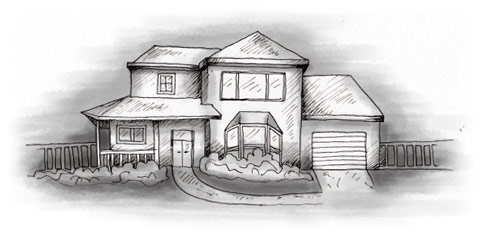If you want to finance your Mexican property through a mortgage, the first question is whether you try to opt for a Peso-mortgage from a Mexican bank or for a foreign-currency mortgage (i.e. a Dollar denominated mortgage) from an international bank. Due to the increasing interest in Mexican property, there is now a wide range of the “cross-border” mortgages available that let you take out a loan in another currency and secure it through a Mexican property.
Mexican Peso mortgages
If you are a foreigner living in Mexico and apply for a Mexican mortgage, most banks will require an FM2 (migrant) visa, which proves that you are a resident in Mexico. If you only have an FM3 (non-migrant) visa, some banks will still deal with you if you have sufficient documentation that proves your financial background abroad.
Although Mexican banks are increasing their mortgage lending, it is still more difficult to obtain a mortgage in Mexico than in the US or Europe. Most banks will not finance 100% of the property value (even with good financial records), and most mortgage loans are limited to a maximum of 20 years.
Interest is normally fixed for the mortgage period and is usually higher than on foreign-currency mortgages. Of course you can speculate on a devaluation of the Mexican Peso (in which case a Mexican Peso mortgage might become cheaper in your local currency), but you should not depend on this as the Mexican Peso has become more and more stable in recent years.
Foreign currency mortgages for property in Mexico
Foreign currency mortgages for Mexican property are provided by international banks (often with Mexican subsidiaries) and specialised mortgage companies. Most of these ‘cross-border loans’ are available for US or Canadian citizens buying property in Mexico, but there are also some European mortgage providers for Mexican estate.
Foreign currency mortgages for Mexican estate are available from 3 to 30 years and are normally restricted to a maximum of 75% of the property value. In many cases banks will require a minimum loan of US$ 100,000.
Interest rates vary between different banks and mortgage providers, and can be fixed or linked to international benchmark rates. They are usually lower than Mexican Peso mortgages, but higher than on mortgages for buying property in the US or Europe.
Paperwork and charges
Whether you opt for a Peso-mortgage or a foreign currency mortgage, you should be prepared for quite a few charges and paperwork.
Common charges associated to a mortgage include commissions, charges for credit scoring, property insurance, mortgage life insurance, property insurance and property valuation notary fees. Some mortgage products also have penalties for early payment. You should check this in advance in case you might want to repay the mortgage early (i.e. if you decide to sell the property).
To check your financial reliability banks will require a proof of income, your credit history, bank references and recent statements, an official identification, your immigration documents (if applicable), the sales contract for the property, a proof of a down payment, a copy of the deeds and in some cases a copy of the architectural plans.
Although banks have been trying to speed up the time for mortgage approvals, the whole process can take up to several weeks. Even if you have a ‘yes in principle’ from your bank, it can still take some time for the final paperwork to be done and the loan to be released. Bear this in mind when agreeing to a timescale on a property purchase, and don’t run the risk of having to pay penalty fees for breaching a purchase contract that was set on an unrealistic time scale.

